Formosa Plastics Corporation, U.S.A.

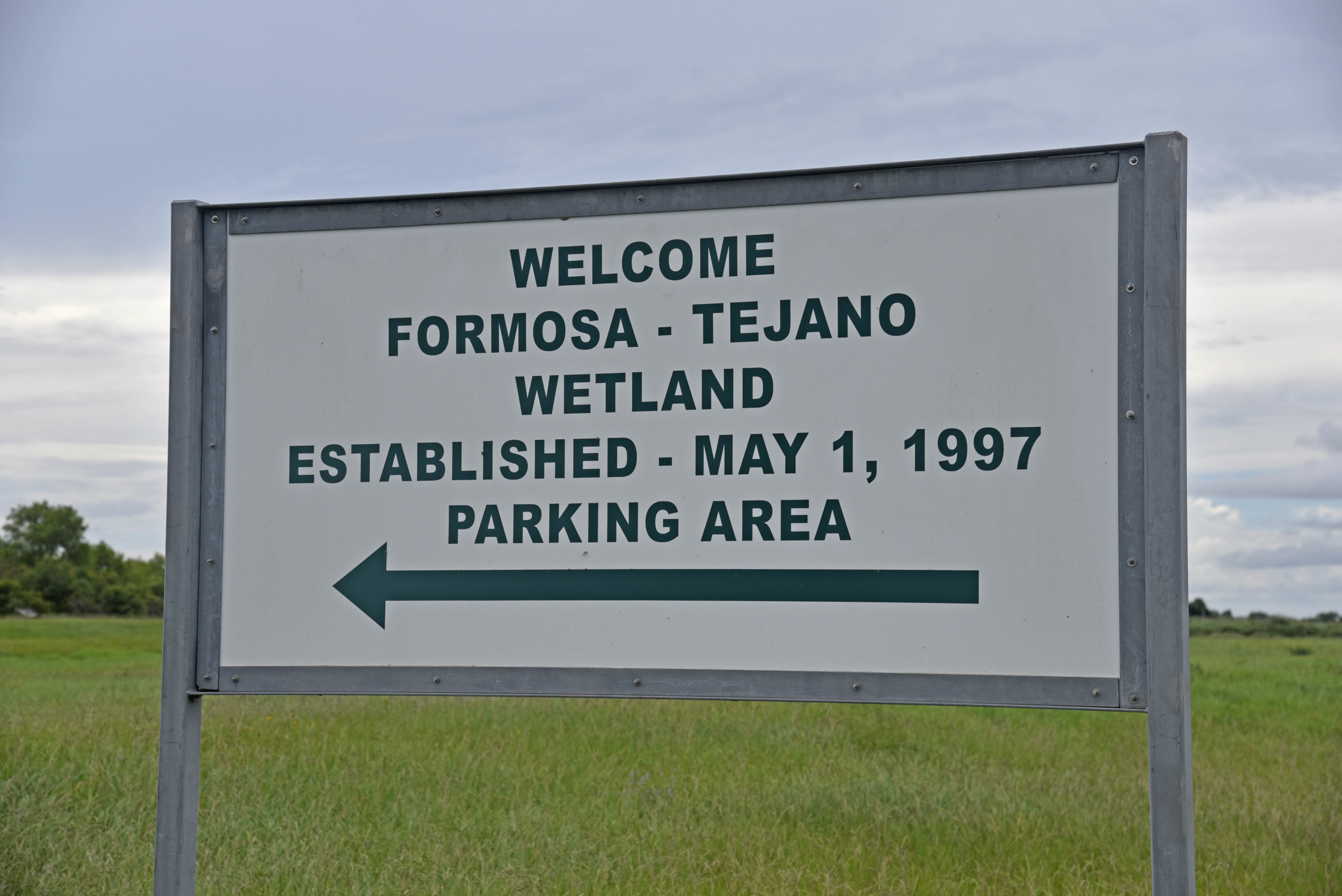
Photo Credit: Steve Marwitz
How Has Formosa Plastics Established Wetland Habitat and Conducted Research and Development to Rejuvenate Biodiversity in Texas?
At Formosa Plastics Corporation, U.S.A., environmental responsibility is a Guiding Principle. As a vertically integrated supplier of plastic resins and petrochemicals, the company owns and manages extensive land holdings near the Formosa Plastics Corp. Texas plant site in Point Comfort, Texas. Among these holdings are the Formosa Agriculture and Ecology Research (AERC) and the 200-acre Formosa-Tejano Wetlands (The Wetlands), both of which were established in the 1990’s.
The Wetlands is a multi-purpose facility as its shallow waters provide a sanctuary for resident and migratory species, a popular location on the Texas Coastal Birding Trail and an extraordinary outdoor education center. In 1997, Formosa initiated an ongoing partnership with a local school district in building an onsite classroom, providing full-time teaching staff and in developing a curriculum that met Texas’ standards for outdoor education. Historically, up to 1,300 students visit the Wetlands in a single school year.
Over the last two decades Formosa has worked to expand the Wetlands’ biodiversity while growing its educational and recreational offerings by adding observation platforms, welcoming youth volunteer projects, and in establishing and sponsoring an annual Audubon Society Christmas Bird Count.
“We are proud of the work we do at the Wetlands in maintaining a haven for migratory species and in providing wetlands habitats tailored to the biological needs of resident species of birds, mammals and reptiles. As a manmade wetland, groundwater is the source of water for the Wetlands. Over the last ten years, we have implemented operational strategies and redesigned water transport infrastructure to minimize water consumption. As a result, groundwater use has declined by over 50%. Perhaps the Wetlands’ most significant societal contribution comes in the form of providing environmental education: very few public-school children in the rest of Texas will experience the hands-on environmental learning provided at the Wetlands to the local school children. Maintaining earth’s biodiversity will require a lot of work: We welcome the challenge.”
– Bill Harvey, Wetlands Manager/Consultant
Switching Gears: Monarchs and Milkweed
The AERC was the vision of Formosa Founder Y.C. Wang and tasked with conducting research to explore strategies for environmentally friendly agriculture. Over the last eight years, that focus has evolved in response to changes in the environment and Formosa Plastics’ growing involvement in sustainable land use.
“It started in 2015 when the AERC entered into a partnership with the U.S. Fish and Wildlife Service (USFWS) to grow milkweed plants that could attract monarch butterflies and help restore the species’ declining numbers,” said Curtis Short, lead scientist at the AERC. “Milkweed is the only plant monarch butterflies consume and our initial goal was to produce enough plants to provide food plots on Formosa properties as well as providing plants to the USFWS for distribution to other organizations. This original project became the catalyst for a completely different operational strategy at the AERC. We quickly moved from basic soil science research and into applied land resource management.”
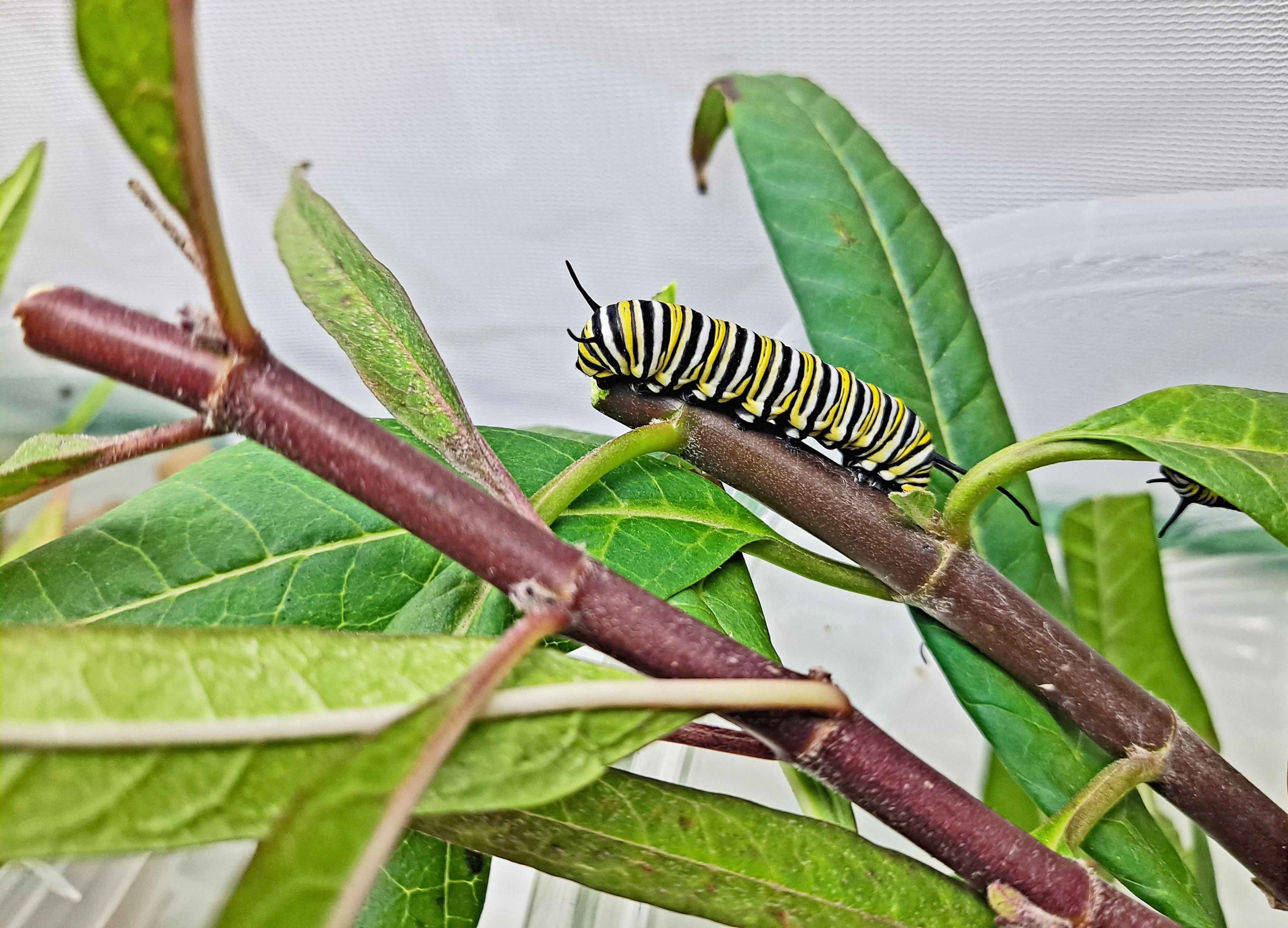
Photo Credit: Curtis Short

Photo Credit: Curtis Short
The AERC produces upwards of 3,640 native milkweed plants annually. All of the milkweed plants produced either die back in the winter months, or are consumed by the monarch butterflies onsite. In the next season, approximately 35% regenerate from the roots. As an offshoot, Short began a trial “butterfly nursery” at the AERC in 2020. “To date, we have two greenhouses dedicated to milkweed production and, not surprisingly, during that process we began to find monarch caterpillars on milkweed plants in our greenhouses.” said Short. “Initially, we found about 20 caterpillars which needed structure nearby for chrysalis formation, so we set up a trial nursery. Then we went looking for more.”
Several containers of milkweed were planted at the Formosa Plastics site in Point Comfort as an additional source of caterpillars: This turned out to be an extraordinarily successful experiment. “Well over half the 100+ caterpillars we collected and raised came from those milkweed plants placed near the entrance to the Point Comfort site,” said Short.
All the Buzz: Bees and Trees
As one square in the environmental sustainability matrix, Formosa Plastics developed a long-term sustainability goal which was a perfect fit for the AERC: “Reforestation applications to provide wildlife and pollinator habitat, increase rainfall interception while capturing carbon…”.
In 2020, the AERC team began investigating strategies for concurrent production of honeybees (pollinators), native flowering plants (nectar sources) and native trees (carbon sequestration and improved rainfall interception). By the summer of 2020, Curtis Short and his team had developed successful seed germination protocols for drought resistant native-Texas pollinator species and began production of plants.
“Ultimately the team wants to plant most of Formosa’s suitable wetlands and rangelands with thriving, carbon sequestering trees. We believe it is a smart, timely land management strategy and, moreover, it is doable” Short explained.
As of 2023, 19 different species of native trees are cultivated in the AERC’s greenhouse and transplanted to the surrounding fields, with varying degrees of success. Many experiments are being run to establish the trees before transplanting, and discovering ideal conditions for growth. In addition to native species, there are three non-native species grown; grapefruit trees, olive trees, and persimmon trees.
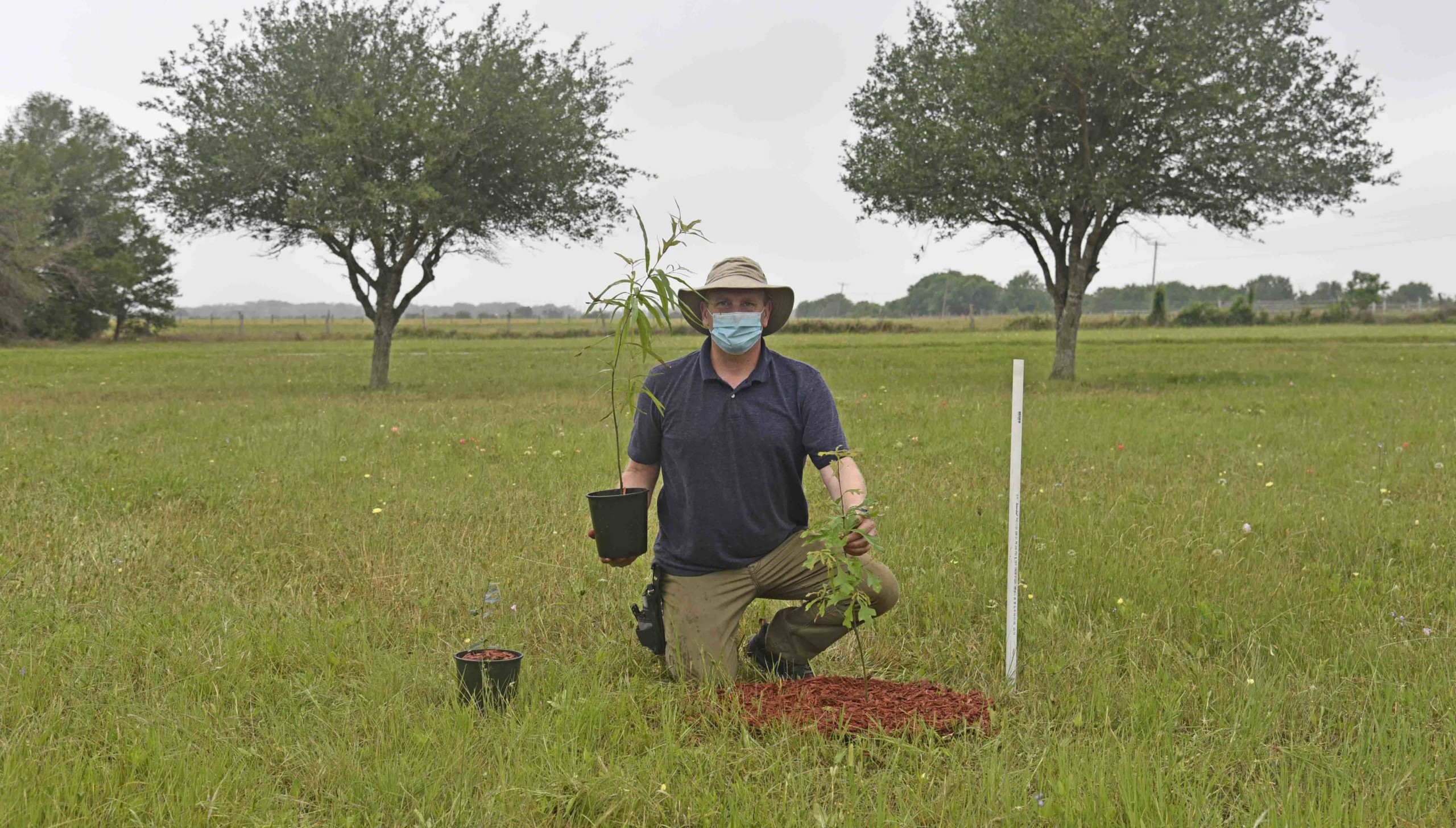
Photo Credit: Steve Marwitz
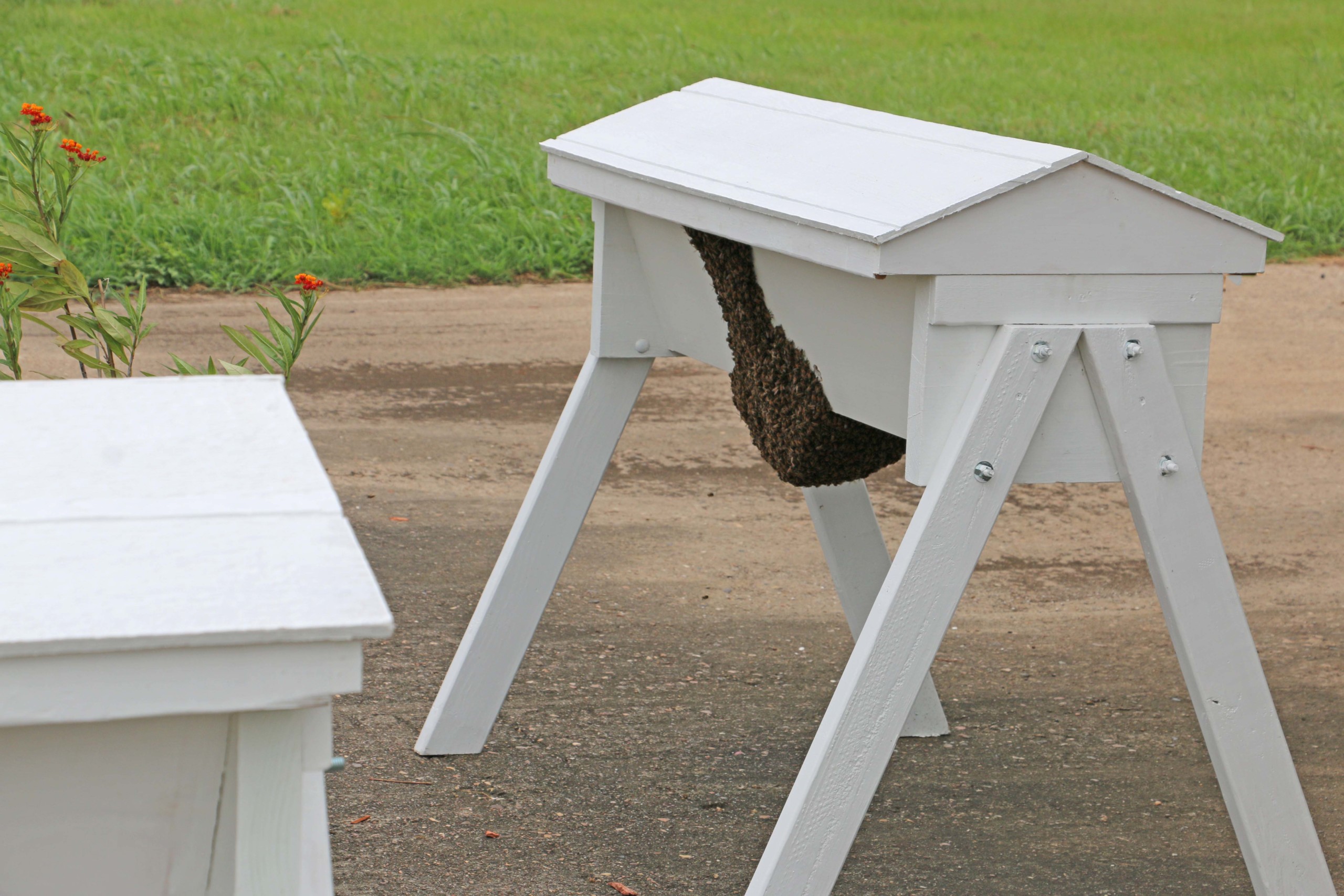
Photo Credit: Curtis Short
In tandem with nectar source planting, the AERC team began investigating honeybee production on the AERC grounds. “Worldwide, bee populations have experienced a significant decline” said Short. “These insects are critical to not only the general ecology of the planet but to all agricultural production that relies on insect pollination.”
The AERC team began beehive construction and identified a site for placement of the hives such that nectar plants could be established on the site periphery. Coincidentally, Formosa Plastics staff were approached with a proposal from a local Agriculture Sciences teacher about the possibility of partnering with the company in a honeybee propagation project at the AERC. “We jumped at the opportunity to partner with the school district in setting up apiaries.” added Short. “Although our primary goal remains that of creating more pollinator activity here, the opportunity to support and facilitate environmental education is a nice bonus.”
Local pollinators, as well, seem to be excited about Formosa Plastics’ environmental initiatives. In mid-June, Short discovered a hulking swarm of bees busily establishing residence in one of the hives, apparently having decided to make the Formosa Plastics AERC its new home.
It sure looks like things are starting to hum around here.
As for future plans, Short and the AERC aim to focus on cultivating more resilient plants and trees in order to cope with increasingly prevalent weather extremes.
About Formosa Plastics Corporation, U.S.A.
Formosa Plastics Corporation, U.S.A. (Formosa) is a privately-held manufacturer of plastic resins and petrochemicals. Formosa is headquartered in Livingston, N.J., with plants in Baton Rouge, LA and Point Comfort, TX. The company is divided into five business units (olefins, polyolefins, vinyl, specialty polyvinyl chloride, and chlor-alkali). Formosa offers a full line of polyvinyl chloride, polyethylene and polypropylene resins, caustic soda and other petrochemical products that deliver the consistency, performance and quality that customers demand. Formosa also markets post-consumer recycled polyethylene and polypropylene products under the FormoleneECO TM brand name.
Formosa is committed to corporate citizenship through environmental responsibility, financial contributions, and community involvement. The company takes great care in having minimal impact on the environment and finding innovative ways to reduce waste, water usage and emissions. Formosa has an extensive water conservation and reuse program with reports showing they have not had any impact on the marine environments into which they discharge water, and have implemented large scale containment ponds in Point Comfort, TX to keep all stormwater contained onsite. Additionally, they have ambient air monitoring programs to verify their facilities do not impact the air quality surrounding their sites.
At the community level, Formosa has established an environmental trust fund that is used for various community outreach projects such as providing a recycling program and transfer station in Point Comfort, TX to promote local recycling and providing outdoor educational opportunities to public school students at the company sponsored Formosa-Tejano Wetlands.
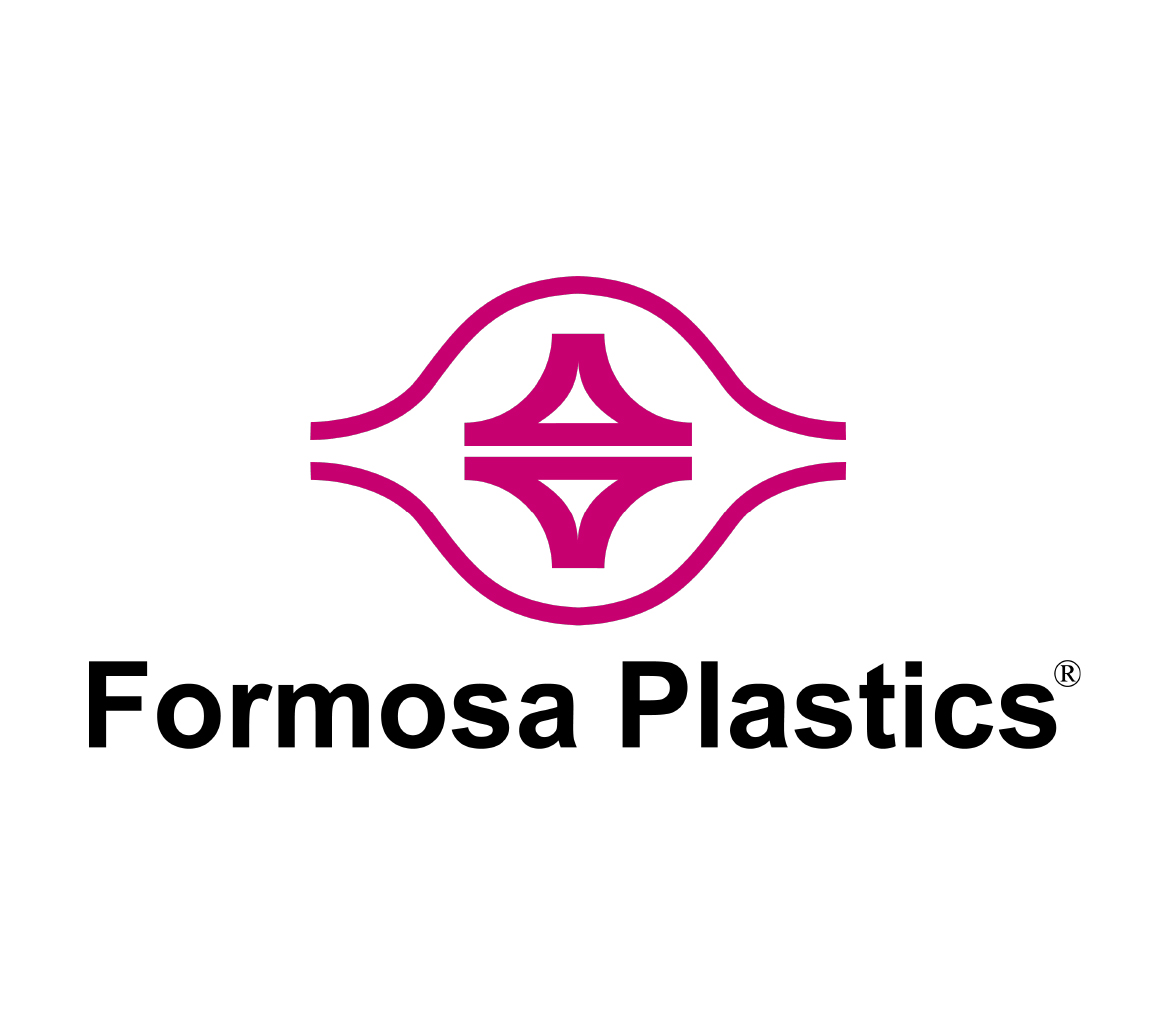
Why +Vantage Vinyl™?
For Formosa, +Vantage Vinyl emphasizes the meaning of sustainable development through common core principles. Those principles guide the entire industry value chain in creating a better method of benchmarking and demonstrating progress.
For more information on Formosa’s sustainability initiatives, please review the company’s 2021 Sustainability Report available on their website.
Learn more about this company’s +Vantage Vinyl verification at ![]()
INTERESTED IN BECOMING +VANTAGE VINYL VERIFIED?
Take the first step toward earning + Vantage Vinyl verification by learning more here.

